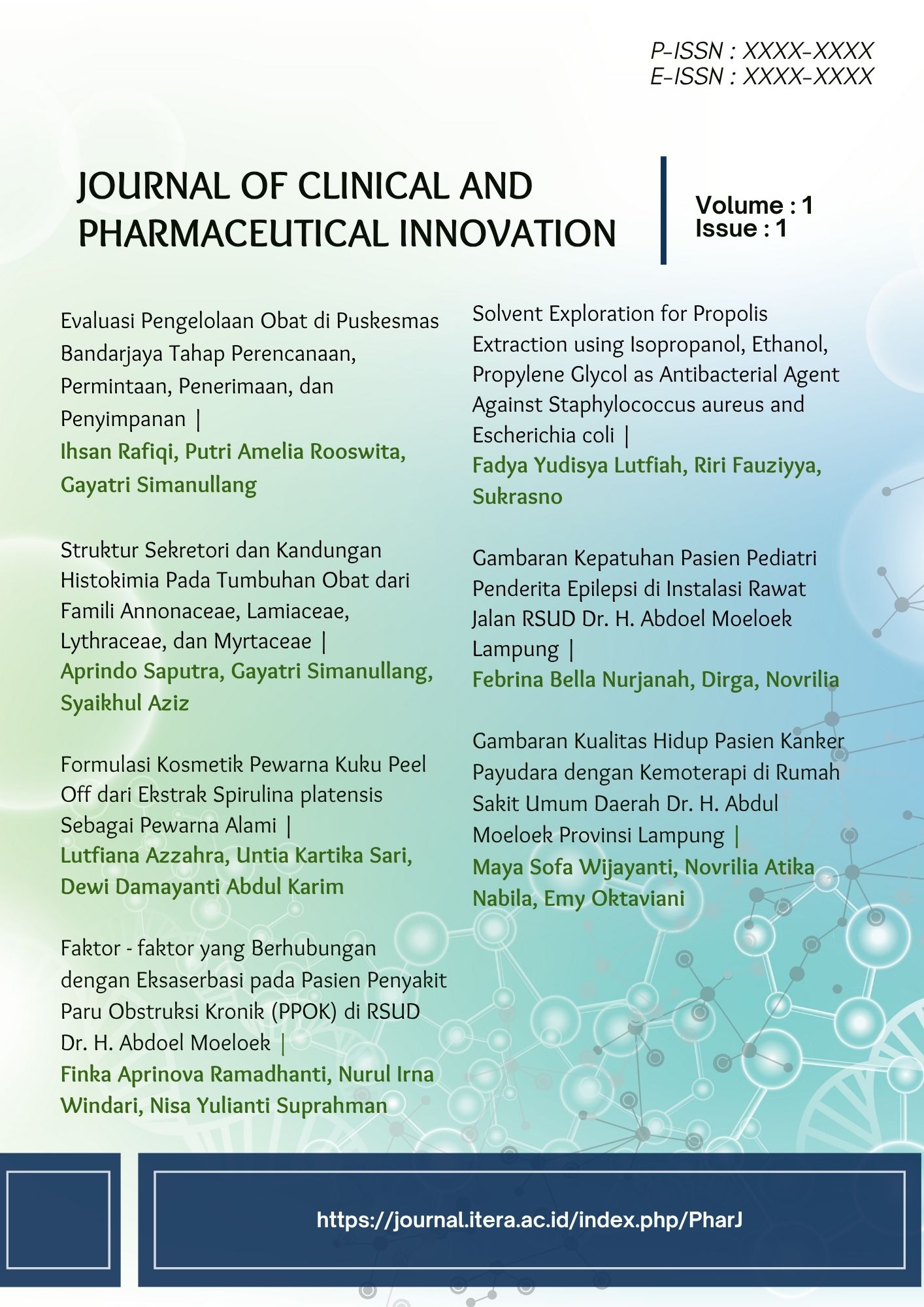STRUKTUR SEKRETORI DAN KANDUNGAN HISTOKIMIA PADA TUMBUHAN OBAT DARI FAMILI ANNONACEAE, LAMIACEAE, LYTHRACEAE, DAN MYRTACEAE
Abstract
The Itera Botanical Garden houses a diverse collection of plants with potential as sources of active pharmaceutical compounds. This study aimed to investigate the secretory structures and histochemical properties of leaves from several plant species belonging to the families Annonaceae (Orophea enneandra), Lamiaceae (Premna oblongata and Premna parviflora), Lythraceae (Lagerstroemia subcostata), and Myrtaceae (Syzygium aqueum) found in the garden. Observations of the secretory structures were conducted using paradermal and transverse preparations stained with safranin. Additionally, histochemical tests were performed to detect the presence of alkaloids, phenols, flavonoids, tannins, and terpenoids using specific reagents and observed under a microscope. The results revealed various plant tissues functioning as secretory structures. Histochemical analysis indicated the presence of secondary metabolites, including alkaloids, phenols, flavonoids, tannins, and terpenoids, as evidenced by color changes during observation. The storage sites of these secondary metabolites varied across species: Orophea enneandra stored metabolites in the epidermis and mesophyll; Premna oblongata and Premna parviflora in glandular hairs; Lagerstroemia subcostata in the epidermis and mesophyll; and Syzygium aqueum in the epidermis. Specifically, in Syzygium aqueum, alkaloids, phenols, flavonoids, and tannins were found in the mesophyll, while terpenoids were stored in oil cells. The primary secretory structures in these plants were identified as glandular hairs and oil cells.



